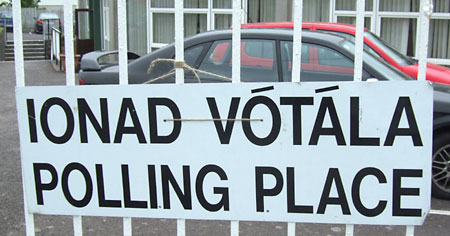Dennis Deery

Once elected, the winners will serve for a maximum of five years. They may end up serving less time than that, as the government (ruling majority) can call an election whenever they wish. If the governing coalition falls apart, a vote of no confidence can be taken in the Dail, also causing new elections to be called. While that’s not expected this time around, there was apparently a period in the 1980s when there were three national elections held in the space of 18 months.
Voting is not quite so simple a matter as selecting your favorite candidate and calling it done, as Ireland uses the instant-runoff voting method. It’s somewhat complicated, but thankfully the Irish Examiner had a good story about it in today’s paper, so I don’t have to explain it - read their story here.
So, I mentioned that the government can call the election whenever they want. In this case, the current government had served for nearly 5 years, the maximum allowed, so everyone knew an election was coming. Signs started appearing on the streets a couple of months ago. However, the campaign didn’t really kick into high gear until April 29 when Taoiseach Bertie Ahern called the election for May 24. From that point on it’s been non-stop campaigning, with a steady stream of politicians at our door asking for our votes (which of course we can’t give). The light poles of Ireland are absolutely covered with campaign signs, with apparently no (enforced) laws about where signs can be posted. You can see some pics below.
 |  |  |  |  |  |
 |  |  |  |  |